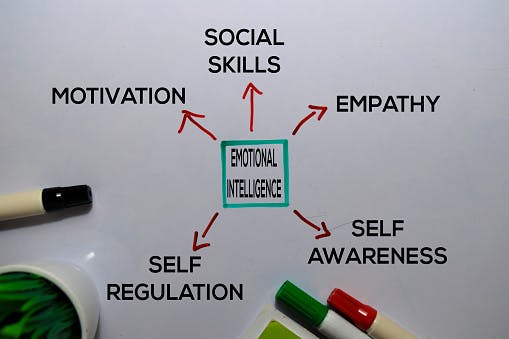Mastering Emotional Intelligence at Work, Part 2
Teams and Productivity
Written By Kenya Carl
June 14, 2022
Edited by Adenike Lanpego
“While people at work have always helped each other out and coordinated their efforts, the ascendance of work teams in large organization puts a new premium on team skills”
“ … people feel the combination of cooperation and increased autonomy offered by a self-managed work team offers more enjoyment and fulfillment. When teams work well, turnover and absenteeism decline, while productivity tends to rise.”
These quotes were written in the book Working with Emotional Intelligence by Daniel Goleman in the 1998. These statements are even more relevant in the modern workplace environment. There is an obvious ripple effect within an organization that consist of High EQ Teams, from being highly productive teams that exceed customer expectations to increased profits for that organization.
Having highly productive teams can be thought of as both an art and a science; it is not a phenomenon merely left to chance. On the contrary, highly productive teams can be created and cultivated by managers who have high levels of Emotional Intelligence (EQ) themselves and who purposely seek team members who both possess EQ and want to improve their current level of EQ.
As defined in our last blog, Mastering Emotional Intelligence at Work – The Benefit of High EQ, Emotional Intelligence (EQ) is the competency to understand one’s emotions and the emotions of others and guide behavior and choices accordingly. The four major areas of EQ are Self Awareness, Self-Management, Social Awareness, and Relationship Management. EQ within teams add an extra layer of complexity to these skills.
Studies show that EQ competency among a team yields a more dynamic output than an individual’s EQ and productivity level. The main factors that determine if a team in the modern workplace will be highly productive are the EQ levels of the team members and how these levels show up within the group.
What are the characteristics of High EQ teams?

High EQ Teams have members that actively listen. Team members are genuinely interested in the other members of their team. They listen to each other without judgement and pay attention to non verbal cues such as facial expression and body language. Because team members are listening well, they are able to seize opportunities to exercise empathy. The members of the team feel that the team is a safe place to express their ideas and contribute to the team openly.

High EQ Teams have members that are respectful. Team members respect each other’s differences in personality, culture, religion, gender, background, and experiences. The differences are recognized, accommodated, and factored into interactions instead of being shunned or invalidated. Differences are seen as valuable assets which create opportunities to further expand upon one’s perspective and knowledge. The members of the team feel that the team is a safe place to be themselves.

High EQ Teams have members that share and influence each other. Team members exchange information, knowledge and resources. They help each other through difficulties. They maintain positive attitudes and seek to encourage each other and offer support. These members do not point the finger and blame each other because they know that their cohesion and productivity would suffer. Instead, they take wins and losses together, they learn from past mistakes, and they plan how to improve. The members of the team feel that the team is a safe place to contribute, learn and to grow.

High EQ Teams have members that take responsibility for their behavior. Team members are polite, kind and caring – demonstrating the Golden Rule. Team members address misbehavior within the team and each member feels responsible to monitor their own behavior and communication. Members apologize for intentional and non intentional misbehavior and miscommunication. The members of the team feel that the team is a safe place to show up for work.
There are other great characteristics of teams with high levels of EQ and productivity. However, they all produce the same type of work environment – a safe place. When teams are in a place of safety, the team members will “go above and beyond” and “maximize their potential” – All of the slogans and phases that we strive for in the workplace become reality.
Studies show that this reality is not dependent on each team member having the highest level of EQ. There will be various levels of EQ within the individuals of a team. Interestingly, it is the average level of Team EQ that is shown to be the determining factor in team productivity.
Teams that have an average EQ range from above average to high are the teams that are able to produce and sustain high productivity. There may be a member(s) of the team who has an average EQ level. Or there may be a member(s) of the team who has a very high EQ level. However, if the average remains high the teams can be highly productive. This dynamic explains why EQ consideration and effect differs from individual EQ level and Team EQ level.
As with an individual’s EQ level, Team EQ can be increased as well. If all members are committed to increasing their EQ level and management sees EQ as a vital asset, employees and teams can be trained to increase their EQ level. The inference is that highly productive teams can be created and sustained through choosing team members that already possess average to high level of EQ and further training.

References:
Team Emotional Intelligence: What It Can Mean and How It Can Affect Performance, Hillary Anger Elfenbein, University of California at Berkeley
How to Build Emotionally Intelligent, Productive Teams, Center for Management & Organization Effectiveness, Blog: cmoe.com/blog/build-emotionally-intelligent..
Working with Emotional Intelligence, Daniel Goleman. New York: Bantam Books.


